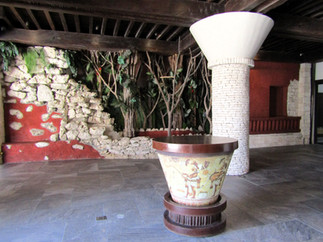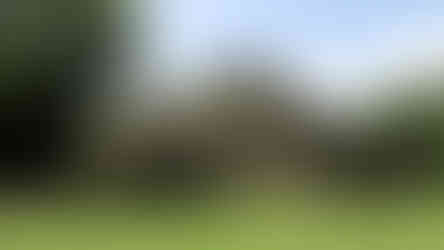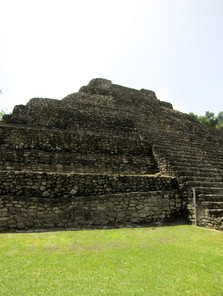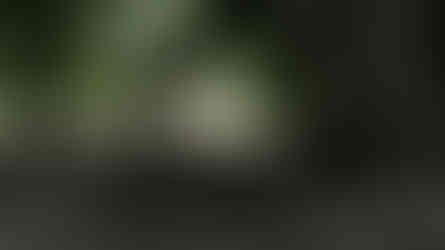Costa Maya, Mexico
- Julie-Anne Justus
- Aug 18, 2024
- 6 min read
Updated: Aug 20, 2024
Our cruise itinerary that we had booked was rudely disrupted by Hurricane Ernesto. For safety reasons, the cruise line decided that instead of visiting the Dominican Republic, US Virgin Islands, Antigua, St Maarten, Puerto Rico and the Bahamas, we will be travelling to Honduras, Belize, Mexico (two stops), Grand Cayman and Jamaica. So we'll avoid Ernesto and hopefully, stick to the sunny, non-hurricane-y Caribbean ports.
I am sad because I had done some background reading for our planned stops, which is now irrelevant. I am happy because we won't spend 9 days in a hurricane.
So we're still in the Caribbean, and still visiting Caribbean islands. Just different islands. This morning we disembarked at Costa Maya, on the Yucatán peninsula. Strictly speaking, we're not in Yucatán state. We're in Quintana Roo state, which is an adorable name and sounds like a children's entertainer.
Okay, to be pedantic, Costa Maya is not an island. It's a small port in a very beautiful part of the world. The Caribbean is the location of the Mesoamerican Barrier Reef, the second largest coral reef system in the world after (ahem) Our Great One. A lot of people come here to snorkel, scuba dive, swim with the dolphins, swim with the stingrays, etc. Personally I am not a fan of touchy-touchy wildlife tourism, so we resisted the dolphins.
Costa Maya is south of Cancun and was developed by the state government as another Cancun-type destination in 2001. About 10 years later it was destroyed by a hurricane, and was rebuilt a few years after that. There are lots of swimming pools, a beach, bars, restaurants and shops. Sigh. Lots of shops. The young man holding out his arms to me had cajoled me into his skin-care shop previously. He did not want to let me/my $$$ escape. This is also the land of tequila!
And flamingos! I loved the flamingos!
The small town closest to the port is called Mahahual. As you may guess from 'Costa Maya', this area is the home of the Mayan people. The Maya have lived for thousands of years across quite a large area that includes part of Mexico, Guatemala, Honduras and Belize. Two of our guides so far have been Mayan. Mayan homes are very recognisable: the roofs are all palm thatch. This design feature is carried through in many buildings in towns as well.
Outside the town, the area is sparsely populated. Chacchoben is about an hour's drive from the port. To get there, we travelled through miles and miles of mangroves: red, white, dwarf. We became very fond of mangroves in Darwin. Mexican mangroves don't look like those in Darwin, but they all do the same things. They're the only trees anywhere that can tolerate saltwater and are effective long-term carbon sponges, so are a conservation priority worldwide. They also function as fish and animal nurseries, like little play-pens, and act as shock absorbers when storms and tide surges approach land. And we learned a new mangrove fact: mangroves provide nutrients for the coral reefs. (No coral in Darwin!)

Out of the town beyond the mangroves, people have small businesses ...
... or are employed in construction projects. I particularly admired the road workers having their siesta under the bridge!
The Maya people lived at the Chacchoben site for about 1200 years, from about 200 BC to around 1000 AD. The height of the settlement, and the biggest buildings, were around 700 AD. People left the settlement around 1000 AD, when (the theory is) the population became too large for the area to sustain it. The more people came to live at Chacchoben, the more forest had to be cleared. The more forest was cleared, the fewer animals there were to hunt. Climate change and drought also led to Mayans abandoning their cities.
Once the sites were abandoned, nature reclaimed the sites and within a few hundred years the buildings had disappeared from view. This really is the jungle: today was 32 °C with extremely high humidity. Temperature 'real feel' is 39 °C. A few pictures of termites in trees, bromeliads everywhere, the hive of non-stinging American bees in a tree, old banyan trees, and the cotton silk tree that has a thorny trunk. The thorns protect the tree from animals eating or climbing the tree when it's young.
And a male spider monkey who was very upset by all the visitors. Diego said there would be a baby monkey somewhere close by that the monkey was protecting.

Mexican archaeologists excavated the Chacchoben site in the 1990s and it's been open to the public since 2002. Some repair work was needed: for some time, local people had used the abandoned blocks to build their houses, and tree roots had broken many structures into rubble. If you look carefully, you can see a mortar line in the lowest level where blocks have been replaced. I found it interesting that successive generations built on top of the existing structures. So one generation might have built one level, the next generation built the next, and so on.
The site has a circular path through the jungle. We visited three excavated and restored pyramids, as well as many walls and staircases. Archeologists are still excavating other 'hills' that contain more buildings. This pyramid below is the largest one.
One of the buildings has traces of red paint that was used in its heyday. The painted area is covered with a tarpaulin to protect it from the weather.

The marketplace was a large open area close to the pyramids.
Diego, our guide, was very well versed in Mayan history, tradition and culture. (He also showed us photographs of his other interest — spearfishing — but I digress.) He demonstrated how to calculate years by the Mayan calendar ... but I will need a refresher course before I show you.
At the base of the largest pyramid is a large stone slab or stela with a Maya inscription. The Maya wrote in hieroglyphics. There were originally about 5,000 Mayan texts and here Diego is demonstrating what the books looked like.

Hah, there's a twist to this story. Yes, there were 5,000 Mayan texts but guess how many survive today? Four! In the 16th century a Spanish Franciscan friar went on a book-burning spree in an effort to coax the Mayans towards Christianity. Very topical in the current political environment, no?
In 1562, Spanish Franciscan friar Diego de Landa burned thousands of Maya bark-paper books in an attempt to erase the Maya people's memory of their gods and ancient beliefs. The books, known as codices, contained knowledge of Maya religion and civilization, as well as the history of the American continent. The books were illuminated and painted on long sheets of bark paper and told stories of dreams, wars, eclipses, god prophecies, rains, corn harvests, and more. Landa deemed the books heretical and burned them in front of a church in the town of Maní, on the Yucatán peninsula. -- Popular Archaeology
In 1945 a Russian lexicographer broke the Mayan code using the four extant Mayan texts (three are in Europe, only one is in Mexico). This allowed scholars to decode the Maya's calendar system and their understanding of astronomy and mathematics. Did you know that the Maya were the first people to use zero in their mathematics? I did not. I thought it was the Arab mathematicians. For the Maya, a dash represents 5, dots represent units, and a spiral shell represents zero.
I have shown you only one pyramid so far. After a very steep climb up to another hill, we emerged to find two smaller temples. All of these pyramids were used as temples, to worship the gods and to perform traditional ceremonies. They were always situated in a way to facilitate astronomical calculations, too.
But what about human sacrifice, you ask? Have you seen Mel Gibson's Apocalypto? Not to be confused with Apocalypse Now. I'll tell you what I learned ... in my next post from Belize! (Actually we learned about a fate worse than being sacrificed to the gods, and it involves sport and stingrays.) Stay tuned for this exciting story.






































































































Glad you were able to avoid the hurricane even though it meant a change to your itinerary.